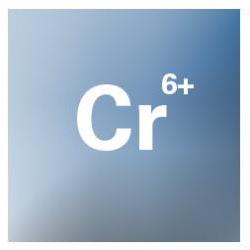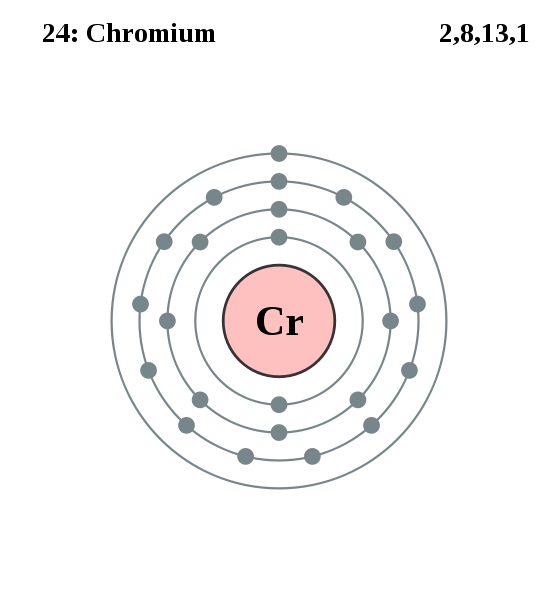 I read this article online in the Salt Lake Tribune this morning… The EWG is drawing attention to the presence of Hexavalent Chromium in water supplies nation-wide.
I read this article online in the Salt Lake Tribune this morning… The EWG is drawing attention to the presence of Hexavalent Chromium in water supplies nation-wide.
What is Hexavalent Chrome (Chromium VI)?
According to our friends at the wikipedia:
“Hexavalent chromium (chromium VI) refers to chemical compounds that contain the element chromium in the +6 oxidation state. Virtually all chromium ore is processed via hexavalent chromium, specifically the salt sodium dichromate. Approximately 136,000,000 kilograms (300,000,000 lb) of hexavalent chromium were produced in 1985.[1] Other hexavalent chromium compounds are chromium trioxide and various salts of chromate and dichromate. Hexavalent chromium is used for the production of stainless steel, textile dyes, wood preservation, leather tanning, and as anti-corrosion and conversion coatings as well as a variety of niche uses.
Hexavalent chromium is recognized as a human carcinogen via inhalation.[2] Workers in many different occupations are exposed to hexavalent chromium. Problematic exposure is known to occur among workers who handle chromate-containing products as well as those who arc weld stainless steel.[2] Within the European Union, the use of hexavalent chromium in electronic equipment is largely prohibited by the Restriction of Hazardous Substances Directive.
Hexavalent chromium is transported into cells via the sulfate transport mechanisms, taking advantage of the similarity of sulfate and chromate with respect to their structure and charge. Trivalent chromium, which is the more common variety of chromium compounds, is not transported into cells.
Inside the cell, Cr(VI) is reduced first to metastable pentavalent chromium (Cr(V)), then to trivalent chromium (Cr(III)). Chromate-dyed textiles or chromate-tanned leather shoes can cause or exacerbate contact dermatitis. Vitamin C and other reducing agents combine with chromate to give Cr(III) products inside the cell.[3]
Hexavalent chromium compounds are genotoxic carcinogens. Chronic inhalation of hexavalent chromium compounds increases risk of lung cancer (lungs are especially vulnerable, followed by fine capillaries in kidneys and intestine). According to some researchers, the damage is caused by hydroxyl radicals, produced during reoxidation of pentavalent chromium by hydrogen peroxide molecules present in the cell. Strontium chromate is the strongest carcinogen of the chromates used in industry. Soluble compounds, like chromic acid, are much weaker carcinogens.[3]
In the U.S., the OSHA PEL for airborne exposures to hexavalent chromium is 5 µg/m3 (0.005 mg/m3).[4][5] “

Hexavalent chrome can be found in a number of areas (mostly in soil, not water), and is difficult to remove completely from drinking water. My standard protocol is to pretreat with an appropriate filtration technology (the synergy of the empowered water system works really well here as a POE pretreatment) and then process with an NSF-approved reverse osmosis (R/O) purifier to significantly reduce the chromium. Sometimes it is also appropriate to add an anion exchange tank in the chloride form as an intermediate stage to reduce chromium ions at a “whole-house” or facility level before the R/O purification stage.
I think this further emphasizes the need for multiple “qualities” of water to supplied by municipalities. “Working water” and “Drinking water” should be supplied in separate distribution networks to homes and businesses instead of treating “everything” to drinking standards. Why waste time, effort, energy, and money on treating water that is merely going into the garden? I firmly believe that each individual can take charge of their own drinking water by utilizing POE or POU water quality improvement devices to give them the stand of drinking water quality that they want, and can afford.
Yes, this is an important issue, but one can’t react emotionally to information like this and we certainly don’t need more federal regulation in local affairs. Since less than 1% of municipally supplied water is actually consumed by humans, why should the other 99% be treated to “drinking” water levels? It just doesn’t make sense!
Are you worried about chrome in your water?
* * *
http://www.sltrib.com/sltrib/news/50898154-78/chromium-epa-lake-salt.html.csp?page=1
Salt Lake City’s water is unsafe, says environmental watchdog
By JUDY FAHYS
The Salt Lake Tribune
Published Dec 20, 2010 09:36AM
Updated 1 minute ago Updated Dec 20, 2010 01:01AM
An environmental group says millions of Americans are drinking tap water that contains too much cancer-causing chromium 6.
The Environmental Working Group’s (EWG) study of drinking water in 35 cities found 31 — including Salt Lake City — where samples turned up hexavalent chromium, the contaminant made famous in the 2000 movie “Erin Brockovich.”
Pointing to this “one-time snapshot,” the group is calling on the U.S. Environmental Protection Agency to begin regulating chromium 6 and to start requiring water systems to test for it.
“The current regulation on chromium is completely outdated,” said Rebecca Sutton, an environmental chemist with the Washington, D.C.-based watchdog group. “And EPA knows this.”
The EWG study said that its test of Salt lake City water found chromium 6 at 0.3 parts per billion. That put Utah’s largest city in 11th place among the 35 cities tested, though significantly lower than Norman, Okla., which had levels tested at 12.90 parts per billion.
Another way of looking at the level in the Salt Lake City test is to compare it to a standard that California regulators have proposed: .06 ppb. According to the EWG analysis, the Salt Lake City sample was five times higher.
Florence Reynolds, water quality and treatment administrator for the Salt Lake City Department of Public Utilities, had not seen the EWG’s report and questioned details such as how many samples were taken, where they were drawn and how the testing compared with the EPA’s tests.
She noted that the EPA does not require tests for chromium 6 but rather total chromium, which includes chromium 6, and Salt Lake City’s water has not shown detectable levels of it — results which contradict EWG’s findings.
“I’ve looked at the data, and I don’t see any chrome,” she said, noting that the EPA has yet to set standards for testing for chromium 6 and levels considered a cancer hazard in water.
Meanwhile, the EPA said it is updating its health assessment for chromium “and the agency does not believe it is appropriate to revise the standard on chromium while that effort is in process.”
In an e-mail, an agency spokesperson wrote, “When the assessment is complete, EPA will evaluate the results and consider the appropriate next steps.”
Until that’s done, the EPA is sticking with its standard of 100 ppb of total chromium as an indicator of hexavalent chromium.
Said Reynolds: “If there’s an issue [once the EPA finalizes any new regulations], we will take care of it. But at this point, we don’t see an issue.”
Chromium 6 can come from steel mills, pulp mills, metal-plating shops and leather-tanning facilities. It also can enter the water naturally as soil and rocks erode.
Reynolds pointed out that all of Salt Lake City’s water supplies come from the mountains above industrial areas typically linked to the contaminant.
Another complication is that all chromium is not alike. Chromium 6 is linked to stomach cancers, anemia, gastrointestinal-tract damage and harm to the liver and lymph nodes. But its cousin, chromium 3, is essential to sugar and lipid metabolism.
Under the right conditions, chromium 3 can transform into chromium 6, and vice versa.
The EWG said in its report that treating both types of chromium the same, as EPA does, makes no sense.
“A safety standard that lumps levels of a toxic carcinogen with a nutrient necessary for health,” the group said, “is like grouping arsenic and vitamin C.”